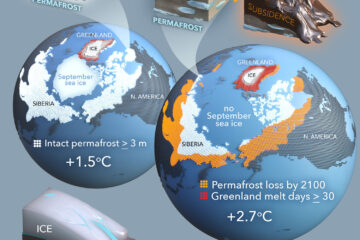Persistent effects of fire-induced vegetation change on energy partitioning and evapotranspiration in ponderosa pine forests
We compared energy fluxes between a site converted from ponderosa pine (Pinus ponderosa) forest to sparse grassland by a severe wildfire 10 years ago and a nearby, unburned forest. We used eddy covariance and associated instruments to measure total radiation, net radiation, albedo, and fluxes of energy into latent heat, sensible heat, and the soil. Total radiation, vapor pressure deficit, and air temperature were similar for each site. Compared to the unburned site, net radiation efficiency (net radiation/total radiation) was 30% lower and albedo 30% higher at the burned site. The magnitude of sensible and latent heats varied seasonally at both sites. Sensible heat was the major component of the energy balance in cold or dry seasons, whereas latent heat was the major component in the warm and wet season. Soil heat flux was the smallest in magnitude of the measured energy fluxes. Compared with the unburned forest, the burn-created grassland generally had lower sensible and latent heats, but greater soil heat flux for both soil cooling in winter and warming in summer. The grassland had similar maximum air temperature as the forest, and warmer surface soil temperature during the summer. Thus, the lower albedo and greater sensible heat of the forest did not produce a warmer site compared with the grassland, apparently because of the cooling effect of greater latent heat in the forest. Our results suggest only small changes in site air temperature, but larger changes in site surface soil temperature by shifts from forest to grassland caused by severe fire in northern Arizona ponderosa pine forests.


